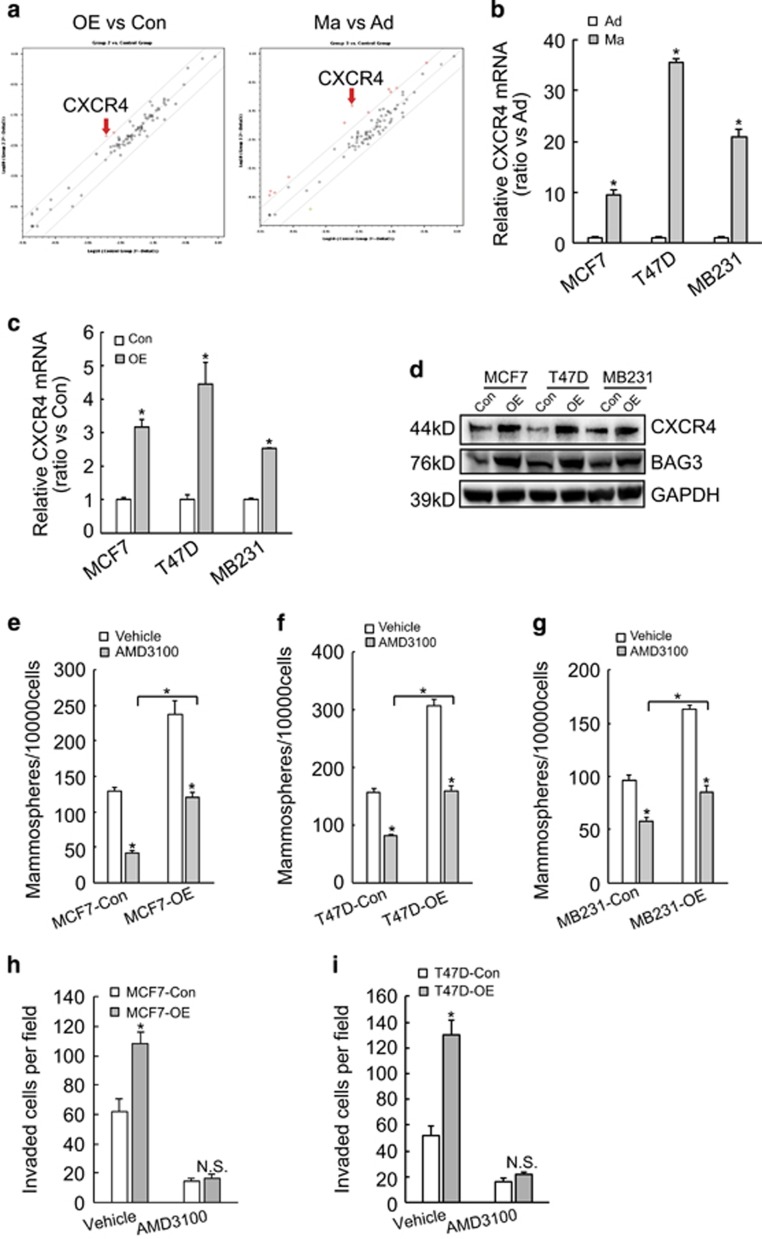Figure 4.
BAG3 promotes mammosphere-forming capacity of breast cancer cells via upregulation of CXCR4. (a) RT2 profiler PCR array was performed using total RNA isolated from control (Con) or BAG3-overexpressing (OE) MCF7 cells, traditional adhesive (Ad) or mammosphere-forming (Ma) cultured MCF7 cells, and CXCR4 was identified as one of significantly increased molecule in both OE versus Con and Ma versus Ad. (b) Breast cancer cells were cultured under traditional or mammosphere-forming condition, and real-time PCR was performed to measure CXCR4 mRNA expression. (c and d) Breast cancer cells transduced with empty of BAG3 construct were cultured under traditional condition, and CXCR4 mRNA (c) and protein (d) expression was analyzed using real-time PCR and western blot analysis, respectively. (e–g) Control or BAG3-overexpressing MCF7 (e), T47D (f) and MDA-MB-231 (g) cells were cultured under mammosphere-forming condition in the presence of vehicle or AMD3100 for 7 days and the number of mammospheres was counted. (h and i) The invasiveness of control or BAG3-overexpressing MCF7 (h) or T47D (i) in the presence of vehicle or AMD3100 was evaluated by a Matrigel-coated Transwell assay. Cells that passed through Matrigel were counted and represented as the mean±S.E.M. from three independent experiments. NS, not significant; *P<0.01

